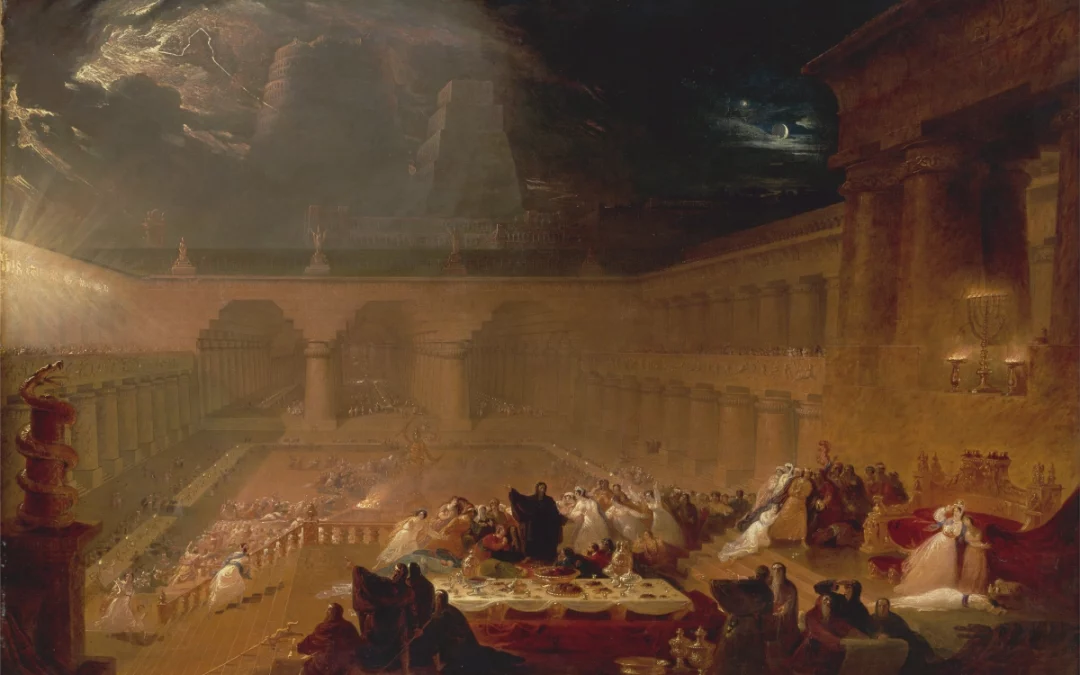
Hilary of Poitiers, Incarnation, & Partitive Exegesis
God and man are, well… different.
This fundamental assumption is called the Creator/creature distinction and is the bedrock of doctrines such as creation, man, man’s fall, and Christ the Redeemer. This all-important distinction is what sets Christian theology apart from false theological constructs like Pantheism, where it’s thought God and creation are essentially the same thing.
This Creator/creature distinction ought to be assumed in our interpretation of the biblical text. Not only does it become clear in Genesis 1:1, “In the beginning God created…,” but it’s explicitly stated in places like Numbers 23:19, “God is not a man…”
Especially important is the consistent application of the Creator/creature distinction as we think about the incarnation of the Son of God. The doctrine of the incarnation is Scripturally expressed in places like Philippians 2:6-7, “being in the form of God… taking the form of a bondservant…” This scriptural truth is enshrined in orthodox creeds like the Nicene Creed, which reads, “For us and for our salvation [the Son] came down from heaven; he became incarnate by the Holy Spirit and the virgin Mary…” The Creator, God the Son, became a creature. The task of theologians, therefore, is to read and exegete Scripture in such a way that does justice to the meaning of the text — which principally teaches this Creator/creature distinction. We should avoid reading Christological texts as if this Creator/creature distinction isn’t taught elsewhere in the text. It must be allowed to guide our reading.
In light of the incarnation — where Creator and creature are united in a single Person — how do we read the text in such a way that we do justice to its other claims, i.e. that there most certainly is a Creator/creature distinction, that God is not man nor man God? We do not want to read Scripture in such a way that violates the very foundations upon which Christianity stands.
Thankfully, there is a 4th-century French theologian here to help — Hilary of Poitiers.
Hilary & Partitive Exegesis
Partitive exegesis is the act of biblical interpretation that seeks to read Christological passages in light of the Creator/creature distinction.
Hilary begins with two fundamental assumptions:
- In the Person of Christ, there are united two natures — divine and human
- This union is without conversion, confusion, or composition (an assumption that functions to preserve both divine and human natures united in His one Person)
He writes:
So the Dispensation of the great and godly mystery makes Him, Who was already Father of the divine Son, also His Lord in the created form which He assumed, for He, Who was in the form of God, was found also in the form of a servant. Yet He was not a servant, for according to the Spirit He was God the Son of God.[1]
He furthermore adds:
Being, then, in the form of a servant, Jesus Christ, Who before was in the form of God, said as a man, I ascend to My Father and your Father, and My God and your God. He was speaking as a servant to servants: how can we then dissociate the words from Christ the servant, and transfer them to that nature, which had nothing of the servant in it? For He Who abode in the form of God took upon Him the form of a servant, this form being the indispensable condition of His fellowship as a servant with servants. It is in this sense that God is His Father and the Father of men, His God and the God of servants. Jesus Christ was speaking as a man in the form of a servant to men and servants; what difficulty is there then in the idea, that in His human aspect the Father is His Father as ours, in His servant’s nature God is His God as all men’s?[2]
The “Dispensation” is a reference to the “fullness of times” (Eph. 1:10) in which the Son of God was made “a little lower than the angels.” (Ps. 8:5; Heb. 2:7, 9) It is this “Dispensation” wherein the Son assumes flesh that He is regarded as less than the Father. The Father is Lord of the Son only as the Son is considered according to His human nature. However, according to the divine nature, Father and Son — while distinct Persons in the Godhead — are but one Lord. (Cf. Athanaisan Creed)
This two-natured union in the Person of the Son occurs simultaneously (so to speak). Both divine and human natures are united in the Person of Christ without “conversion, composition, or confusion…” (2LCF 8.2) Hence, Hilary says, “For He, who was in the form of God, was found also in the form of a servant. Yet He was not a servant, for according to the Spirit He was God the Son of God.” Both deity and humanity are true of the Person of the Son, but according to two distinct senses or natures.
The influence of this doctrine cannot be missed in Hilary’s exegesis. In the second paragraph presented above, Hilary pulls from John 20:17 to show how it and similar passages must be understood in light of the hypostatic union. To set up his commentary, he says, “Being, then, in the form of a servant, Jesus Christ, Who before was in the form of God, said as a man…” In other words, John 20:17 are words spoken by Christ, not according to His divine nature but according to His human nature. Hilary approaches the text with this in mind.
Doctrines undergirding such an approach are those such as immutability and omnipresence. According to His divine nature, the Son cannot move from one place to another since He does not change (immutability), nor can He travel to a place in which He’s already present (omnipresence). John 20:17, therefore, must be spoken according to a nature other than the divine — a nature capable of ascending from earth to heaven.
Hilary further presses when he asks a rhetorical question, “How can we then dissociate the words from Christ the servant, and transfer them to that nature, which has nothing of the servant in it?” Not only would it be heterodox to transfer that which is proper only to the creature to the Creator, but it would also be utterly nonsensical. If there is “nothing of the servant” in God, how could texts like John 20:17 apply to the divine nature? If there were something of the servant in the divine nature, to what avail is the incarnation? Why would God assume humanity if humanity was already in God?
Conclusion
Concluding the matter, Hilary writes, “Jesus Christ was speaking as a man in the form of a servant to men and servants; what difficulty is there then in the idea, that in His human aspect the Father is His Father as ours, in His servant’s nature God is His God as all men’s?” Partitive exegesis allows Hilary (and us) to locate the proper place of subordination. Is the Son eternally subordinate? Or is He only subordinate according to His human nature? The latter must be the case upon a theological reading of the issue. Additionally, a partitive reading of Christological texts preserves both divine and human natures in their substantial integrity — avoiding the ever-present danger of blurring the Creator/creature distinction.
Resources:
[1] Hilary of Poitiers. On the Trinity. Kindle Edition. Loc. 5582.
[2] Hilary. On the Trinity. Loc. 5589.





